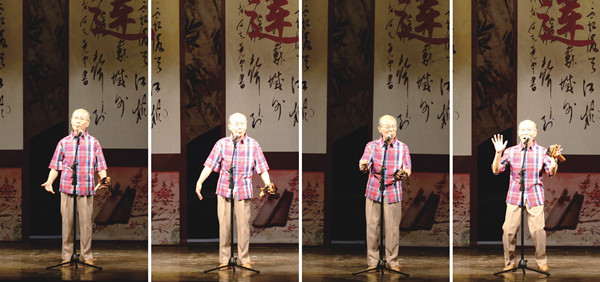
A man performs Taiyuan Lianhualuo. [Photo provided to chinadaily.com.cn]
Lianhualao is an ancient art genre combining talking and singing that originated from Buddhism and was popular in the Song Dynasty (960-1279).
The performance style traces its roots all the way back to the earliest Buddhist disciples who sang in front of the lotus throne of Buddha statues in response to Buddha's affairs, hence the name of Lianhua (literally Lotus).
The art form was first introduced to Shanxi province during the Qing Dynasty (1644-1911) and now exists only in Taiyuan. It is often performed by one person, talking and singing in Taiyuan dialect accompanied by bamboo clappers.
The traditional repertoire of Lianhualao is mostly based on historical stories and folklore familiar to the locals.
In the early 1960s, the young crosstalk actor Cao Qiang of the Taiyuan Quyi Federation began to learn Lianhualao from Li Liangen, a famous Lianhualao artist. Cao created Taiyuan Lianhualao based on real-life experiences, and it is now a renowned performance at temple fairs and on stage.
